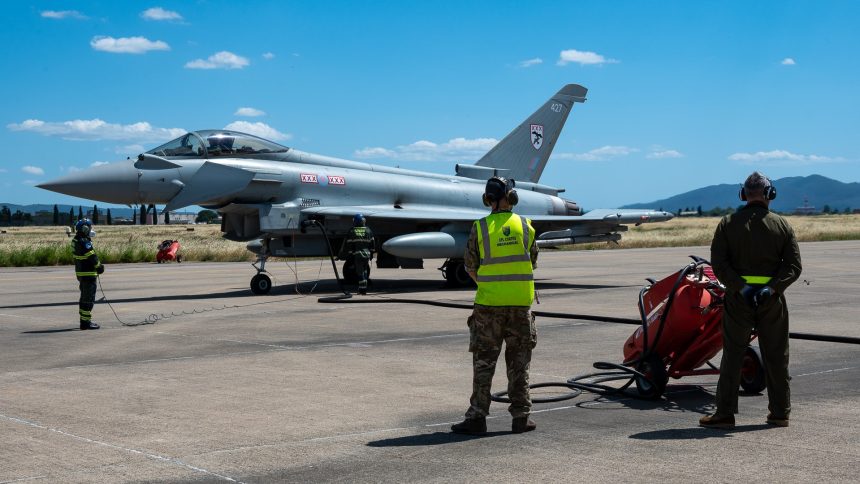Typhoons from the RAF 29 Squadron and all Italian Air Force’s units worked together to compare, develop and achieve a Hot Refueling capability.
The Italian Air Force has recently announced that its F-2000 Typhoon units trained together with Typhoons from the Royal Air Force’s 29 Squadron, based at RAF Coningsby in Lincolnshire, to test a new Hot Refueling capability. The training activities were conducted by the Wings equipped with the aircraft to “compare, develop and achieve a Hot Refueling capability,” said the ItAF in a press release.
F-2000As (as the single seater Typhoons are designated in Italy in accordance with the MOD’s Mission Design Series – the two-seaters are designated TF-2000A) belonging to the 4° (from Grosseto), 36° (from Gioia del Colle), 37° (from Trapani) and 51° Stormo (from Istrana) will now benefit from the new capability to be refueled without shutting down their engines, improving the readiness and reducing the turnaround times needed to launch again the fighters for subsequent missions.
The Hot Refueling, also referred to as Hot-Pit Refueling, has seen a renewed interest in the last few years, with air forces working on concepts such as the U.S. Air Force’s Agile Combat Employment (ACE) to improve the readiness and the capability to quickly deploy and operate even from small outposts with little support.
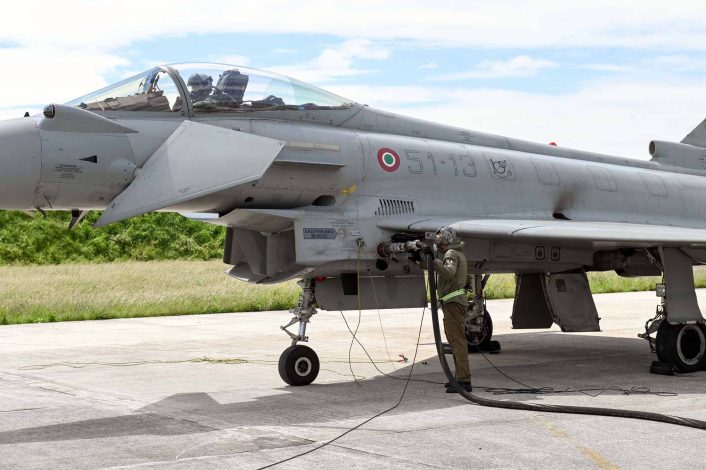
The Hot Refueling
The Italian Air Force said the joint activities with the Royal Air Force were conducted in May, with the 51st Wing acting as lead. In addition to the 51st Wing and 29 Squadron, personnel from the 4th, 36th and 37th Wings, together with the 3rd Wing’s Forward Arming and Refueling Point (FARP) personnel, were also involved.
Multiple training events took place as part of the activity, with the first one being at Istrana Air Base. The service explained the Hot Refueling was conducted 15 times, transferring 50 cubic meters of fuel, and highlighted that a significantly low time elapsed between the landing, refuel and return to flight.
After this event, other units trained autonomously, with the 4th Wing performing the hot refueling with the HRS – Grifus fixed system, followed by the 36th Wing. The Italian Air Force says the Typhoon has now a new expeditionary capability that is needed to operate with NATO.
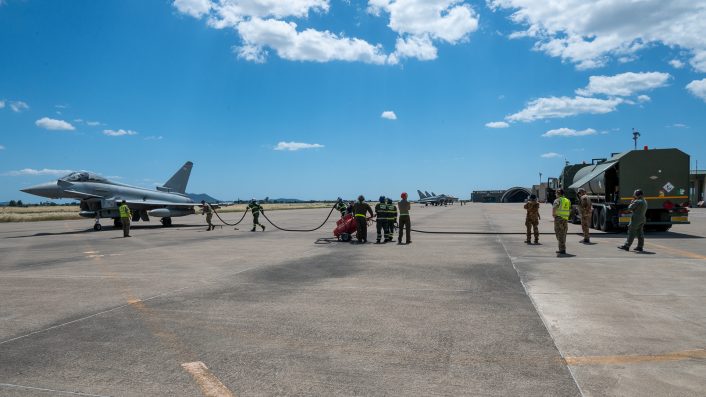
Hot refueling is not a novelty for Italy, as the operation has already been conducted multiple times in exercises which involved the F-35 Lightning II. Many of these specifically focused on expeditionary scenarios where F-35Bs were refueled on the ground, with the engines running, by KC-130s with the ALARP (Air Landed Aircraft Refuelling Point) system.
The Italian Air Force, in fact, considers the F-35B and its STOVL capability a crucial component of a larger expeditionary system that makes the service capable to project power far from home, in a semi-permissive environment, on an austere/bare runways normally not usable by other conventional aircraft and with limited Force Protection provided by the host nation. The Typhoons might now be involved in similar operations in future.
Joint operations
The Italian Air Force explained these activities are part of the Implementing Arrangement with the Royal Air Force to increase the interoperability in the maintenance and logistics of their common Typhoon fleets, as well as the integration of their assets when employed in the same operational context.
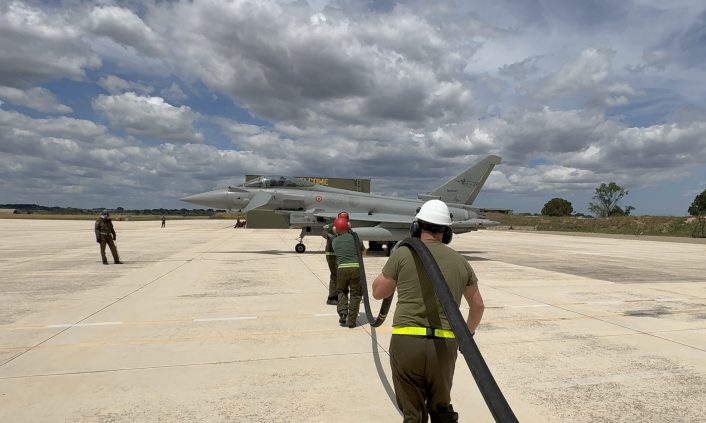
The new hot refueling capability follows the activities of the Reparto Sperimentale Volo, the ItAF’s test unit, which certified the procedures for the operational units. This is “a significative step forward in terms of readiness and operational reaction times that the numerous international scenarios require,” says the service.
The service further explains that its “growing operational needs made it necessary to develop and implement a refueling procedure that guarantees maximum readiness and reactivity.” The refueling of the aircraft with its engines still running allows to quickly be ready to launch the same aircraft for another mission, intensifying the flight operations.
The Royal Air Force has been working on these capabilities for some years now, exploring new concepts of operation with the Typhoons. The service has adopted the ACE model and has now added hot pit refueling, highway operations and austere operations to its portfolio.
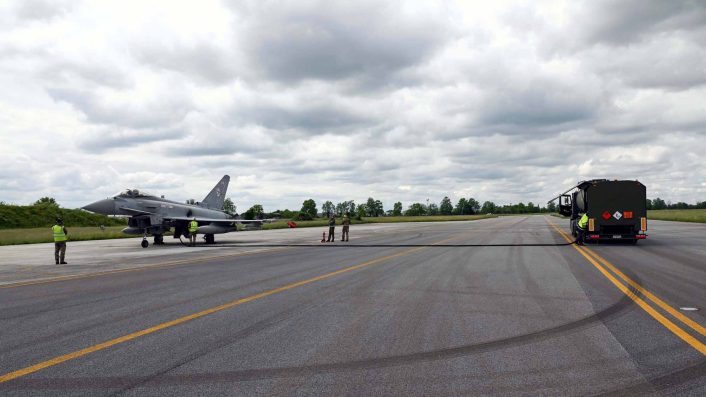
“Agile Combat Employment is a proactive and reactive concept of operations that will enhance the RAF’s resilience and flexibility through the exploitation of agile, adaptable, and optimized basing in the UK and overseas,” said the RAF in a previous press release. “The concept relies on a rapid and agile approach to operational activities, maintaining the initiative and outpacing adversary action.”
These capabilities were first tested during a proof-of-concept exercise in Norway, where Typhoons were deployed on short notice to Bodø Main Air Station, embedded within the Royal Norwegian Air Force base and conducted the hot refueling. The lessons learned through similar exercises are now being shared with the Italian Air Force, which similarly operates the Typhoon.

